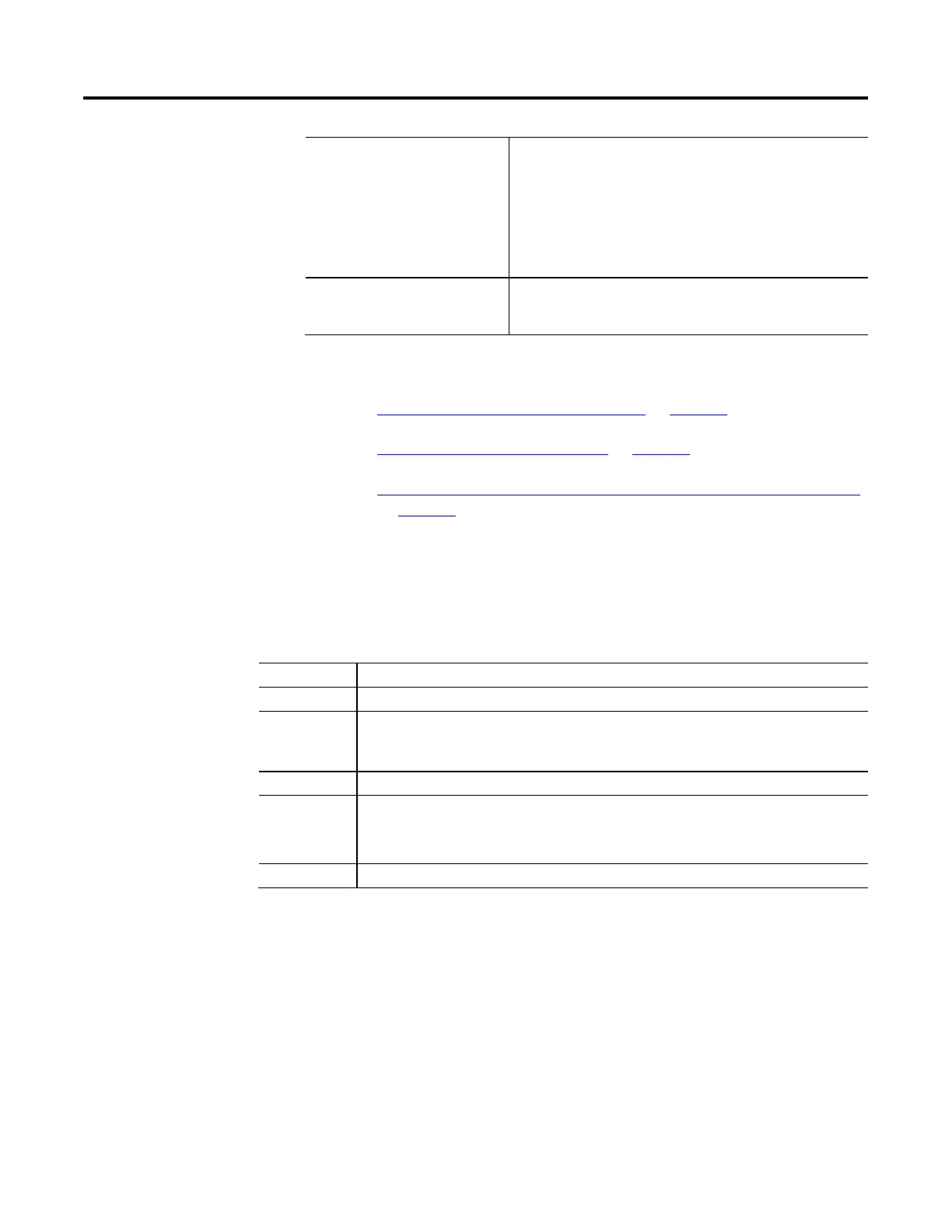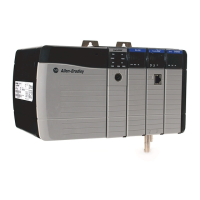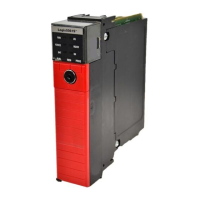Rockwell Automation Publication 1756-RM006K-EN-P - November 2018 481
Limit execution of the SOVR instruction to a
single scan.
Limit the execution of the SOVR instruction to a single scan. Each command
applies to only a specific state or states. Once the Equipment Sequence changes
state, the command is no longer valid. To limit execution, use methods such as:
• Run the SOVR instruction within a P1 Pulse (Rising Edge) or P0 Pulse (Falling
Edge) action.
• Place a one-shot instruction before the SOVR instruction.
• Run the SOVR instruction and then advance to the next step.
Avoid making unnecessary command
requests if the Equipment Sequence is
generating sequence events.
Unnecessary command requests can flood the event processing buffers and cause
you to miss significant events.
See also
Equipment Sequence Override command on page 476
Result codes for SOVR instructions on page 484
When should I use an SOVR instruction instead of an SCMD instruction?
on page 489
When a tag is assigned to store the result of an Attach to Equipment Sequence
(SATT) instruction, the instruction returns one of the following codes when it
runs.
Code (Dec) Description
0 The command was successful.
24579 The Equipment Sequence cannot be commanded for the following reason:
The program successfully attached to the Equipment Sequence, but it cannot command the sequence because Logix
Designer, a higher priority application, has overridden ownership.
24582 The program already owns the Equipment Sequence.
24593 One of the following already owns the equipment phase.
• An external sequencer such as FactoryTalk Batch software.
• Another program in the controller.
24594 The Equipment Sequence is unscheduled, inhibited, or in a task that is inhibited.
Use the Result operand to get a code that shows the success or failure of the
SATT instruction. The Result operand should contain either 0 or a DINT tag,
depending on whether ownership conflicts or other errors are likely to occur.
• If ownership conflicts or other errors are not likely, enter 0 in the Result
operand.
• If ownership conflicts or other errors are likely, enter a DINT tag in
the Result operand. The DINT tag stores a code for the result of the
execution of the instruction.
instructions

